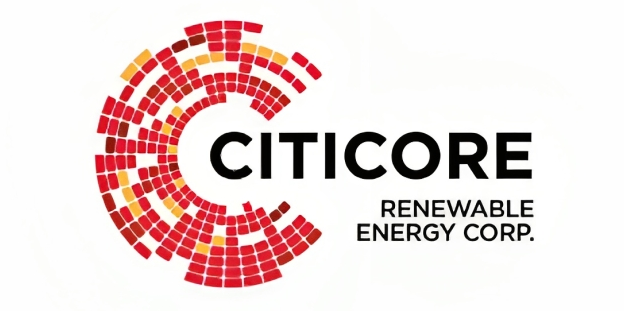
Citicore and Levanta Join Forces to Lead Wind Energy Development in the Philippines
Citicore Renewable Energy Corporation (stock: CREC) is making significant strides in renewable energy with its recent partnership with Levanta Renewables, marking a new chapter in the Philippines’ renewable energy landscape. The two companies are establishing a joint venture aimed at developing 375 megawatts (MW) of onshore wind projects across Luzon and Visayas. This partnership symbolizes a pivotal moment not only for Citicore and Levanta but also for the entire Southeast Asian wind energy sector.
The Philippines has long been recognized for its abundant renewable energy potential, particularly in wind, solar, and hydroelectric power. As the world pivots towards sustainable energy solutions, the Philippines is not far behind. However, despite having substantial wind resources, the country has been slow in scaling up its wind energy capacity relative to its solar investments. Citicore’s push into wind energy, therefore, signifies a critical turning point for the renewable energy landscape in the country.
The partnership between CREC and Levanta is set against the backdrop of the government’s Green Energy Auction Program (GEAP), which in July 2023 allocated long-term power purchase agreements for renewable energy developers. Through this program, the four wind projects have already secured offtake agreements, ensuring a stable market for their electricity output. This is essential in mitigating financial risks, making these projects more viable and attractive for investors.
While other wind energy projects have emerged in Southeast Asia, this partnership is unique due to Levanta’s extensive experience across the region and CREC’s ambitious growth strategy. Levanta, a company backed by global investor Actis, brings a wealth of experience in renewable energy development, construction, and operations. With projects spanning multiple Southeast Asian countries like Vietnam, Indonesia, and Thailand, Levanta is well-positioned to deliver best practices and technical know-how to the Philippine market.
For Citicore, this partnership complements its diversified renewable energy portfolio, which currently includes solar, hydro, and now wind energy. The company is aiming for 3 GW of operating wind capacity in the medium to long term—a significant leap that aligns with its broader goal of achieving 5 GW of solar energy by 2028.
Challenges Facing Wind Energy Growth
While the CREC-Levanta collaboration is a significant move, the Philippine wind energy sector still faces several challenges:
-
Permitting and Regulatory Delays: Wind projects, especially onshore, require complex permitting processes. Environmental clearances, community consultations, and government approvals can delay construction timelines significantly.
-
Grid Infrastructure: The success of large-scale renewable energy projects, including wind, hinges on the ability of the existing grid infrastructure to absorb and distribute power efficiently. In some regions of the Philippines, the grid is either underdeveloped or insufficiently reliable to handle additional renewable capacity. Substantial investments in grid modernization and expansion are critical for ensuring the success of these wind projects.
-
Financing and Investment: Despite securing offtake agreements, obtaining sufficient funding for large-scale wind projects remains a challenge. The GEAP contracts provide revenue stability, but upfront capital costs for construction, land acquisition, and equipment can be significant.
However, the increasing international focus on sustainability financing—particularly from global development banks, climate funds, and institutional investors—is likely to offer more avenues for funding renewable projects. The involvement of Actis in Levanta already hints at the possibility of mobilizing international capital to fuel these ventures.
The Importance of Wind Power
Wind energy is one of the cleanest and most efficient sources of electricity available. In the Philippines, where energy security is a growing concern, expanding the country’s wind energy capacity can reduce dependency on imported fossil fuels, enhance grid stability, and decrease carbon emissions.
Currently, the Philippines has been more reliant on coal and natural gas, which makes the country vulnerable to global price fluctuations and supply disruptions. Wind energy, on the other hand, offers a stable and predictable source of power over time, especially when developed in key areas like Luzon and Visayas where wind resources are abundant.
Moreover, developing wind energy projects contributes to the local economy by creating jobs in construction, operations, and maintenance. These projects also offer opportunities for local communities to benefit from clean energy while contributing to global efforts to mitigate climate change.
Key Details of CREC-Levanta Projects
Here’s a breakdown of what the joint venture is expected to achieve:
- Project Scope: Four onshore wind projects with a combined capacity of 375 MW.
- Geographic Focus: Strategic sites in Luzon and Visayas, two of the most promising areas for wind energy development in the Philippines.
- Timeline: The partnership is subject to regulatory approvals and is expected to close in the next few months. Construction and operational timelines are yet to be disclosed, but typically wind projects of this scale could take 2–3 years from final approval to commercial operation.
- Long-term Goal: CREC aims to build a wind pipeline of 3 GW, contributing to the Philippines’ renewable energy targets and complementing its solar investments.
Advancing Renewable Energy in the Philippines
The CREC-Levanta partnership is more than just a business deal—it’s a reflection of the growing momentum behind renewable energy in the Philippines. As the country looks to balance its economic growth with its environmental commitments, large-scale wind energy projects like these will play a crucial role. For CREC, this venture represents an opportunity to strengthen its position as a leader in the renewable energy market. For Levanta, it’s a gateway into a promising market that aligns with its regional ambitions.
This joint venture will help the Philippines progress toward its renewable energy targets and pave the way for future collaborations between local and international players in the sector. It's a valuable reference for anyone interested in the future of clean energy in Southeast Asia.